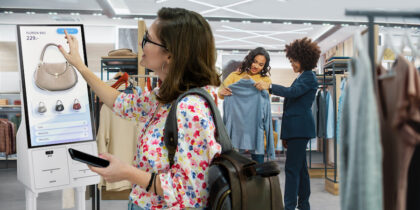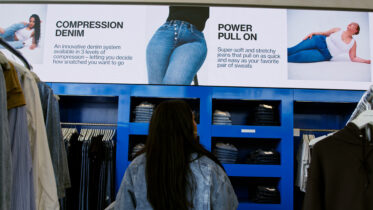Is enthusiasm for retail beacon technology grounded in reality?
Public forecasts are bullish on the potential impact of this technology in the retail sector. Business Insider Intelligence predicts that installed beacons will grow from 50,000 in 2014 to 4.3 million in 2018, and will directly influence over $40 billion in 2016 U.S. retail sales.
Major retailers such as Macy’s and Hudson’s Bay have enthusiastically rolled out the technology to all of their stores, while other giants like Target and Kohl’s have launched substantial pilots.
These retailers join industry experts in pointing to a set of compelling reasons for committing to beacons, including the proliferation of smartphones and their ubiquitous presence as shoppers roam retail aisles, and consumers’ increased need for a more personalized shopping experience.
So is the “Year of the Beacon” truly at hand?
Although beacon technology has tremendous potential in the retail sector, the work involved — on both the retailer’s and the consumer’s parts — may be understated. This technology is uniquely designed to bridge the physical-digital gap on the store floor, but it isn’t an automatic slam dunk. In fact, to ensure success, the strong potential of beacon solutions demands both a strong strategy and the recognition that shoppers, retailers and the industry at large are all at an early stage on the beacon learning curve.
What Is Beacon Technology?
Beacons are small, battery-operated transmitters that communicate a weak Bluetooth signal (called Bluetooth Low Energy, or BLE) to other Bluetooth-enabled devices located within a distance of 30 meters or so. Individual device prices can range from $6 to approximately $30. Beacons can be mounted on a wall or counter, and with the shopper’s permission, can detect their nearby Bluetooth-enabled smartphones and send out relevant alerts, coupons, directions and product reviews, etc.
The objective of beacon technology is to engage the shopper, provide a new level of in-store personalization and incentives, and keep the customer coming back for more.
Benefits to Retailers
Using beacons provides many advantages for retailers, including:
- More in-store traffic, as a result of improving, mobilizing and personalizing the shopping experience.
- Increased sales from making product information more accessible and the actual purchase experience quicker and easier.
- A clearer understanding of shopper behavior, based on data collected and analyzed over time.
- Stronger customer loyalty and higher retention rates by understanding and providing what the shopper wants — and does not want — from beacon solutions.
- An additional revenue stream by selling advertising “space” to selected merchandise brands.
Clearly, the potential benefits of retail beacons demand that merchants take the technology seriously. However, in order to be effective, a beacon-based store strategy also demands some work on the part of the retailer and the shopper.
Retailers Need to Implement a Detailed Beacon Strategy
To get the maximum benefits from this new service, it’s important to develop a strategy for implementing the technology, training employees and monitoring development. In order to ensure a successful beacon adoption, retailers must first perform the following tasks:
- Research beacon manufacturers and service providers.
- Decide if the solution will be created in-house or with an external partner.
- Formulate a realistic budget and rollout plan.
- Research and understand shopper preferences around proximity-based solutions. What potential benefits will make them agree to be tracked on-site?
- Create/adjust their mobile software application to accommodate a beacon-based strategy.
- Put an asset tracking policy and process in place to keep track of the hardware.
- Train the workforce. The solution must be easy to understand and implement.
- Monitor and update on an ongoing basis.
While consumers are becoming increasingly familiar with their smartphones’ messaging and interactive features, a beacon strategy demands that shoppers take multiple overt steps to take part each time they enter a participating establishment. Requiring this level of engagement from shoppers reinforces just how important it is for retailers to clearly communicate exactly what this service entails, and what the benefits are for consumers.
Consequently, in addition to the nuts and bolts of actual implementation, a retail beacon strategy should include a plan to remind shoppers about beacon-based assistance and rewards, a deployment blueprint that includes a controlled pilot and a carefully planned rollout, and data analytics to leverage the impressive amount of information that can be uncovered by beacons. Because consumers are still becoming comfortable with this new technology, retailers should be sensitive to the evolving shopper experience, but should remain committed to achieving potential monetization with interested brands down the road.
Beacons offer significant hard- and soft-dollar benefits within retail establishments. The key is careful planning and deployment, effective marketing support, and engaged, professional management on a day-to-day basis.
Learn more about technology for the retail market.






